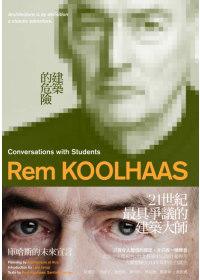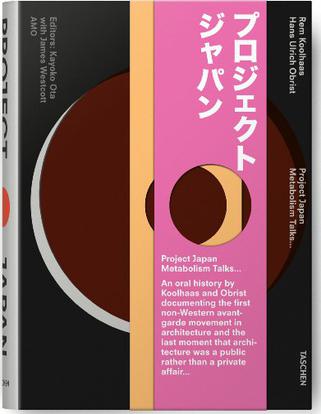欢迎来到相识电子书!
标签:RemKoolhaas
-
建築的危險
◆2000年建築最高榮譽普立茲克獎得主 ◆2010年第12屆威尼斯建築雙年展終身成就金獅獎得主 ◆北京中央電視建築設計師 ◆台北藝術中心建築設計師,曾多次訪台演講 ◆當代最具爭議與矚目度的建築大師 ◆認識都會建築的必備觀念 ◆龔書章_導讀,特別收錄_建築師代表作 當代最受爭議的建築師 道出建築的危險與未來 他說,建築需要更多反叛精神! 北京中央電視台、台北藝術中心設計案得主,大膽實驗2014年即將在台誕生! 庫哈斯1944年生於荷蘭鹿特丹,最初的職業是記者。發生在1968年的學生運動——「68風暴」使庫哈斯從記者和劇作家轉變為一位建築師。這一轉向幾乎可說是一個傳奇。日本建築師伊東豐雄(Toyo Ito)形容:「庫哈斯是一個將作為社會現象的建築轉變成令人反感的事件的記者。他是世界上唯一這類型的建築師。」雖然他的記者身份早已結束,但他卻將記者的本能注入了建築,建築成為他發掘和製造事件的方式。 他先到英國倫敦建築聯盟學院(Architectural Association)學習建築,然後又到紐約研究新世界。在美國學習期間,庫哈斯開始對大都會的城市現象著迷,於是他寫作了都市研究的經典之作:《狂譫紐約》,揚名海外。 31歲,庫哈斯由理論轉向實踐,回歐洲成立了「大都會建築事務所」(簡稱OMA )。OMA 就像庫哈斯手下的軍團,在一間簡陋、蒼白的工作室裡,以不可思議的特性運作著:流動性(庫哈斯幾乎是惟一的固定成員)、劇變性(任何事情都可能在最後一秒發生突變)、全球化(建築師和學生來自各國);疲於奔命(平均每日工作16小時)。 庫哈斯是當代的異數,極少數兼具多種角色於一身的建築師──狂想家∕實踐家、哲學家∕實用主義者、以及理論家∕預言家∕建築師。他更是當今最富浪漫色彩的實用主義者、是最具烏托邦色彩的建築師,也是最具時代實驗精神的創作家。 近年庫哈斯將視角轉往亞洲快速發展中的城市。他以客觀多樣而獨創的觀點,企圖從中看見當代都會新的潛在可能。從北京中央電視台到台北藝術中心,都是這些觀察後的具體實踐。2010年他再度受到肯定,獲頒威尼斯建築雙年展金獅獎終身成就獎,總策展人妹島和世讚譽「庫哈斯對世界的影響超越了建築領域本身,不同的人們都能從他的作品中領略到什麼叫作自由。」為他對當代的影響,下了如是註腳。 本書內容來自這位言詞犀利的建築師,參與萊斯大學的建築講座內容。其中包括一場演講及座談會的內容。在演講中,庫哈斯分別講述三個OMA的建築提案,包括 : 比利時澤布魯日海上轉運站、法國國家圖書館、德國ZKM藝術與媒體科技中心,透過這三個提案,深入探討大都會建築的四個核心概念──內與外、距離、電梯和量體。座談會透過對談的方式,分別就城市規劃、歐美城市比較、建築史、建築教育和未來建築等議題,提出精闢而犀利的觀點,預示了即將到來的重大發展──來自大都會的挑戰。這本令人振奮的作品直指,建築需要更多的反叛精神。書中特別取得OMA授權,收錄歷來代表作並輔以年表及導讀,帶領讀者認識這位發生在我們這個時代的一個傳奇。 Q&A What did Rem Koolhaas say? Q:為什麼建築是危險的職業? A:難到不可置信,非常耗元氣。 Q:建築為何既全能又無能? A:建築師總是懷抱偉大的夢想,但夢想要實現,非得仰賴其他人,仰賴環境不可。 Q:建築師能做的事? A:偶爾在既定的條件下,創造出一些多少稱得上出色的建築物。 Q:建築師該面對的事? A:承認並接受人們正以一種更民粹或更商業的模式重新塑造空間。 Q:全球化的影響? A:全球化將所有人徹底從土地拔起,變成失根之人,變成所有地方的陌生人。 Q:商業對建築的影響? A:商業利益是推動大型、複雜建案的火車頭。 Q:身為建築師該有的態度? A:樂觀主義不只是建築師該有的基本立場,甚至是絕對要履行的義務。 Q:建築教育的功能? A:學院的貢獻是瓦解建築野心而非訓練建築企圖。 Q:未來關鍵的建築形式為何? A:由一名外地人,為遙遠土地上的一塊高貴基地,以不可置信的龐然尺度所做的思辯性投射。 -
Project Japan
By Rem Koolhaas and Hans Ulrich Obrist Having wandered the ruins of Hiroshima, Tokyo and other Japanese cities after WW II, The Metabolists – four architects, a critic, an industrial designer and a graphic designer – showed with the launch of their manifesto Metabolism 1960 how they would employ biological systems (aided by Japan's massive advances in technology) as inspiration for buildings and cities that could change and adapt to the vicissitudes of modern life. Units could be added or removed from buildings like Kisho Kurokawa’s Capsule Tower in Toky o as required; buildings themselves could be added or removed from cities at will in the cell-like master-plans of Fumihiko Maki . Project Japan features a series of vivid, empathetic conversations, replete with surprising connections and occasional clashes between Koolhaas and Obrist and their subjects. The story that unfolds is illuminated, contradicted and validated by commentaries from a broad range their forebearers, associates, critics, and progeny, including Toyo Ito and Charles Jencks. Interspersed with the interviews and commentary are hundreds of never-before-seen images : master-plans from Manchuria to Tokyo, intimate snapshots of the Metabolists at work and play, architectural models, magazine excerpts and astonishing sci-fi urban visions. Presented in a clear chronology from the tabula rasa of a colonized Manchuria in the 1930s; a devastated Japan after the war; to the establishment of Metabolism at the 1960 World Design Conference; to the rise of Kisho Kurokawa as the first celebrity architect; to the apotheosis of the movement at Expo '70 in Osaka. Koolhaas and Obrist unearth a history that casts new light on the key issues that both enervate and motivate architecture today: celebrity and seriousness, sustainability and monumentality, globalization, government participation (and abdication), and the necessity for architecture to reach beyond its traditional boundaries in order to embrace the future.
热门标签
下载排行榜
- 1 梦的解析:最佳译本
- 2 李鸿章全传
- 3 淡定的智慧
- 4 心理操控术
- 5 哈佛口才课
- 6 俗世奇人
- 7 日瓦戈医生
- 8 笑死你的逻辑学
- 9 历史老师没教过的历史
- 10 1分钟和陌生人成为朋友


